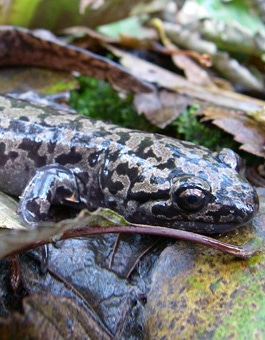

Range
The giant Pacific salamander can be found along Oregon’s west coast.
Description
The coastal giant salamander can grow up to 14 inches long. It has a wedge-shaped head, smooth dark brown to dark grey skin with a brown or tan marbling on the dorsal area. The chin and belly are pale grey or cream. It is one of only a few salamanders that make a croaky sound similar to that of a barking dog.
Diet and habitat
Adults are generally terrestrial foragers, and will consume any prey that can be overpowered including beetles, spiders, slugs, shrews, mice and other salamanders. Its larvae feed on aquatic invertebrates such as tadpoles, small fish and occasionally each other. They live in damp areas at the edge of pools, lakes and streams. On land, they can be found under rotting logs or leaves, or in mossy crevices.
Predators and threats
Toxins from skin glands are used as a defense against many predators.
Reproduction
Females lay their eggs on the leaves and stems of aquatic plants. The eggs will hatch into larvae in 3 to 4 weeks. Larvae, which are totally aquatic, can reach 20 cm and start out in a somewhat tadpole-like state with only a tail, small forelimbs and external gills. In several months they transform into juvenile newts, which soon venture onto land.